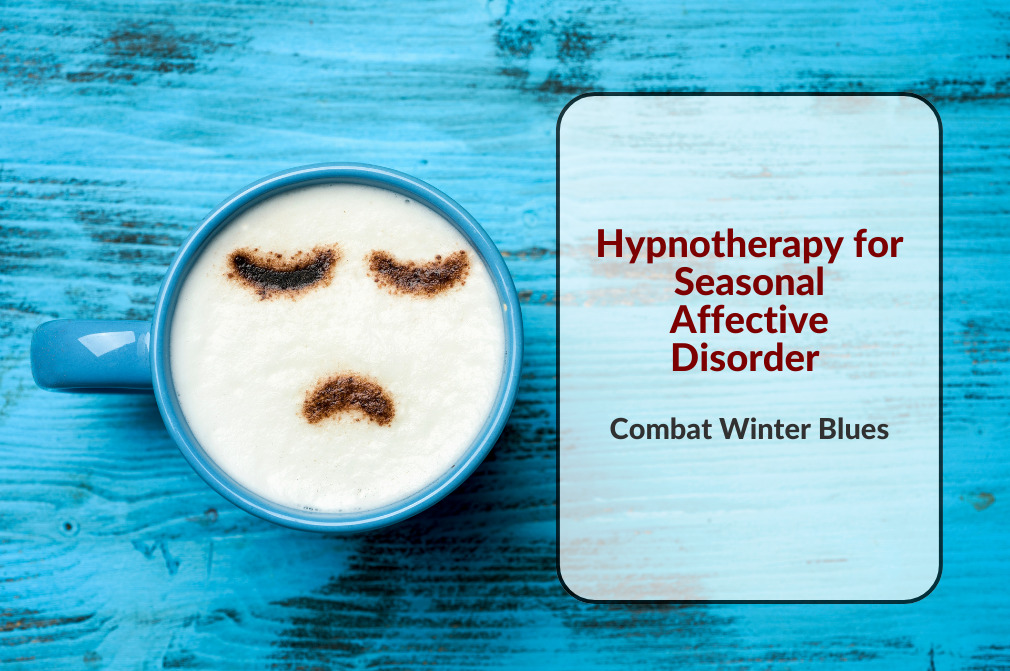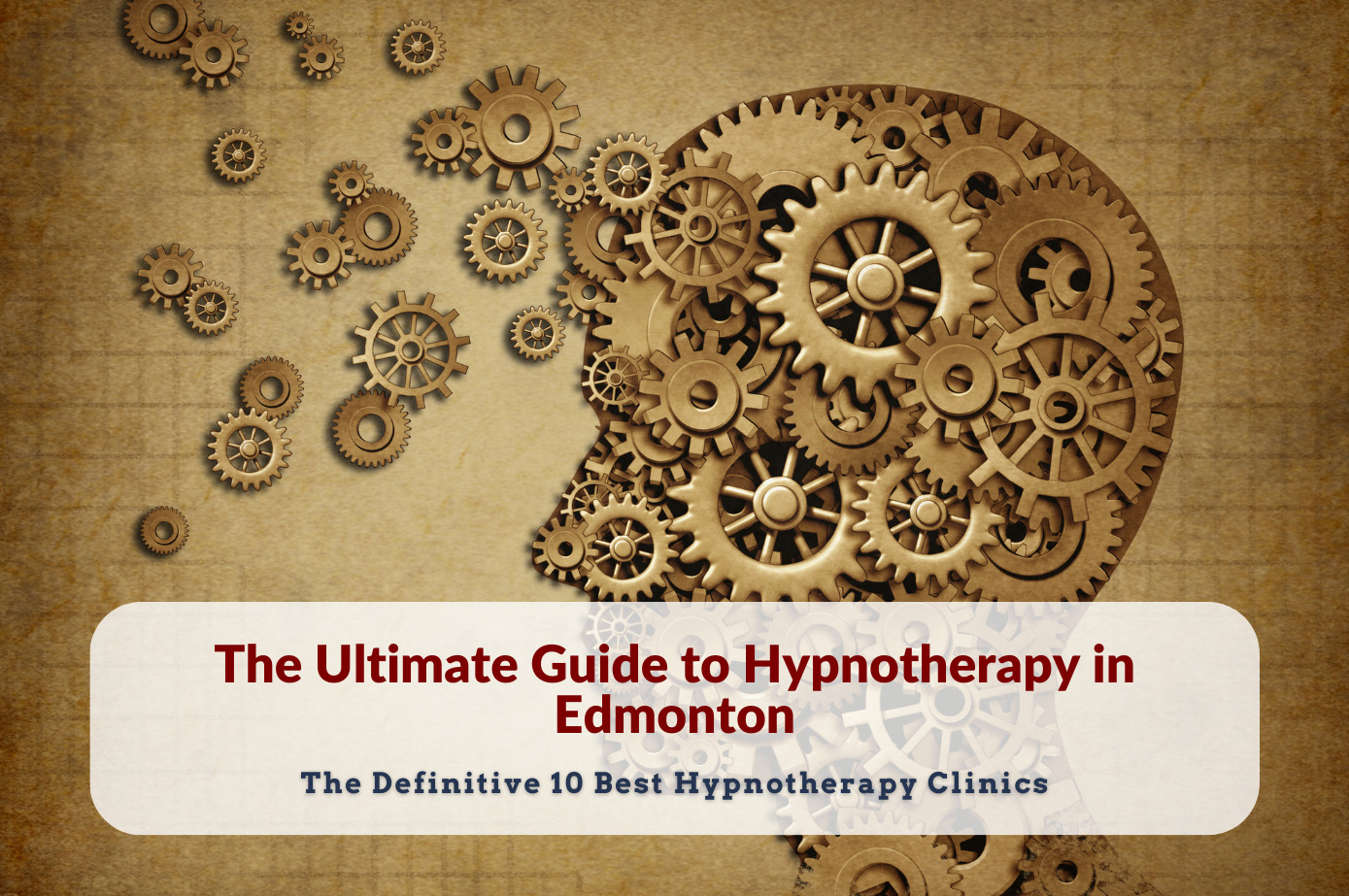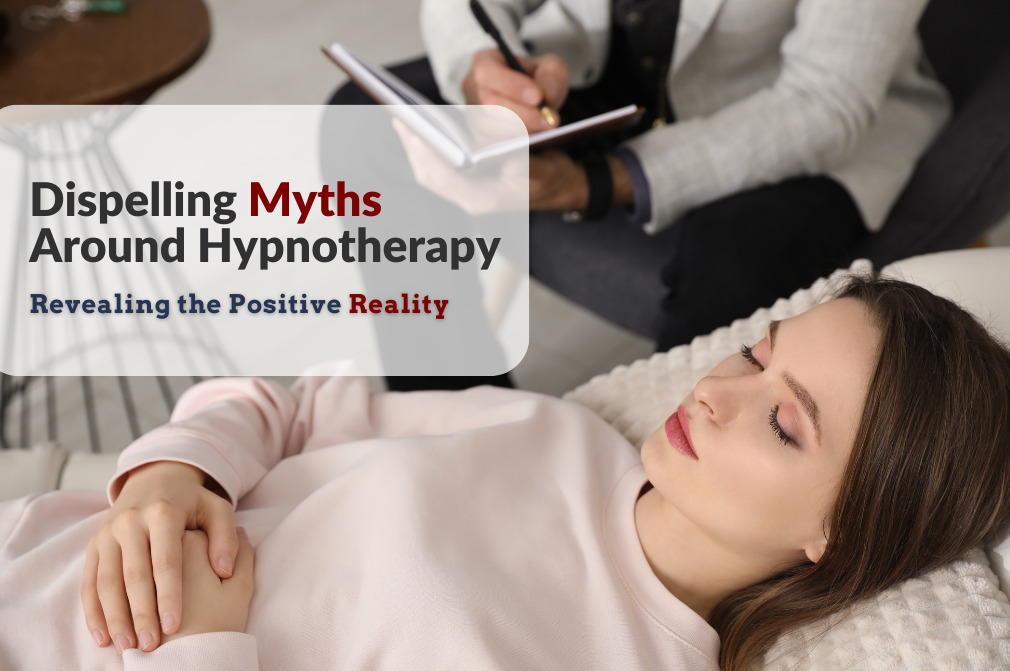Hypnotherapy for Seasonal Affective Disorder (SAD)
Introduction
As the days grow shorter and the sun’s embrace fades, many find themselves grappling with Seasonal Affective Disorder (SAD). This silent and insidious form of depression can cast an icy veil over our lives, leaving us feeling trapped, fatigued, and despondent. However, within the realm of alternative therapies, hypnotherapy stands as an often overlooked solution. This article aims to illuminate how hypnotherapy can help alleviate the symptoms of Seasonal Affective Disorder. Let’s delve into the ways in which hypnotherapy can unlock your inner radiance and navigate through the wintry months with renewed vitality.
Understanding Seasonal Affective Disorder
Before we discuss the transformative potential of hypnotherapy for Seasonal Affective Disorder, it’s crucial to grasp the depths of this condition. SAD is a distinct form of depression triggered by waning daylight and the encroaching chill of winter. With debilitating symptoms such as melancholy, fatigue, and weight gain, it affects millions globally. However, hope is illuminated by the power of hypnotherapy.
Hypnotherapy: The Hidden Gem in Treating Seasonal Affective Disorder
Hypnotherapy, the unsung hero of psychological well-being, is a therapeutic technique that engages the subconscious mind. By creating a state of profound relaxation and heightened focus, it empowers individuals to tap into their inner resources. Hypnotherapy helps explore the roots of Seasonal Affective Disorder, fostering a resurgence of mental resilience.
A Beacon of Positive Suggestions for Seasonal Affective Disorder
Picture hypnotherapy as the gardener tending to the garden of your mind, sowing seeds of positivity that will sprout into vibrant flowers of hope. Keywords such as “sunshine,” “happiness,” and “vitality” are implanted into the subconscious, replacing the overcast sky of negative thoughts with empowering beliefs.
Guided Visualization: Chasing Away the Shadows of Seasonal Affective Disorder
One quintessential element of hypnotherapy sessions is guided visualization. Clients are transported to vivid, sun-kissed landscapes through the theater of their imagination. These guided visualizations not only provide relief from Seasonal Affective Disorder but also serve as a therapeutic escape to warmer, brighter realms.
Charting a Course: Goals and Action Plans for Seasonal Affective Disorder
Hypnotherapy is more than a temporary mood boost; it aims for lasting change. Clients, alongside their hypnotherapists, craft concrete goals and action plans. These guide individuals through the stormy seas of Seasonal Affective Disorder, helping them regain control over their lives.
Conclusion
In combating Seasonal Affective Disorder, hypnotherapy serves as a radiant beacon. Its capacity to unlock inner brilliance, reshape thought patterns, and guide individuals toward positive action is a formidable antidote to SAD. Embrace hypnotherapy to navigate the colder months with a newfound sense of hope and inner luminance.
What is Hypnotherapy and When Does It Start to Work? Hypnotherapy is a distinct form of therapy that is highly personalized. As a result, it’s hard to set an exact timeline for its effectiveness. Several factors influence its speed and results, such as the issue’s nature, individual responsiveness, and the hypnotherapist’s skill.
Nature of the Issue: The severity and complexity of the problem are pivotal. For instance, with simpler challenges like nail-biting or managing stress, some people might feel better after only a couple of sessions. On the other hand, for deep-seated concerns like prolonged anxiety or phobias, it might take longer.
Individual Responsiveness: Every person is different. Some can easily relax deeply and are open to suggestions during hypnotherapy, noticing changes sooner. Conversely, others might need more time to see clear results.
Expertise of the Hypnotherapist: The effectiveness of hypnotherapy often hinges on the therapist’s skill and experience. A seasoned professional can adapt to each person’s needs and oversee their progress, often leading to quicker, more potent outcomes.
Consistency is Key: The outcome of hypnotherapy often leans on the client’s dedication to attending regular sessions. Furthermore, doing any advised self-hypnosis or relaxation techniques between sessions helps. Staying consistent can speed up the journey.
For those seeking a deeper dive into the effectiveness and timeline of hypnotherapy, reputable sources like the Mayo Clinic and Psychology Today can be of help.
In Conclusion, The duration for hypnotherapy to show its impact varies greatly. Some might see changes in a few sessions, while others could take weeks or even months. Key to the process’s success are patience, consistency, and having faith in your therapist. For a tailored timeframe related to your specific issue, it’s best to chat with a certified hypnotherapist.
Absolutely, hypnotherapy can prompt various physiological changes during sessions. Thanks to the profound mind-body connection it taps into, hypnotherapy can bring about tangible and significant physical changes.
1. Embracing Relaxation:
During hypnotherapy, a predominant physiological response is deep relaxation. As individuals slip into a trance-like state, they often experience muscle relaxation, decreased blood pressure, and a calmer heart rate. All these shifts together foster an overall feeling of peace and wellness.
2. Mastery Over Pain:
Historically, hypnotherapy has been a reliable ally for pain management. The suggestions made during a session can spur the release of endorphins, our body’s natural pain-relievers. Consequently, many clients notice diminished pain and greater endurance against discomfort, both during and post-session.
3. Fortifying the Immune System:
Hypnotherapy possesses the potential to fortify the immune system. Through suggestions that amplify the body’s natural defenses, some individuals notice an enhanced immune response.
4. Alleviating Stress:
One of the acclaimed benefits of hypnotherapy is stress reduction. By administering suggestions aimed at curtailing anxiety and stress, physiological alterations transpire. These may include diminished cortisol levels, which is known to boost overall health and mood.
5. Sharpening Focus and Cognitive Abilities:
Hypnotherapy can pave the way for heightened concentration and cognitive prowess. Often, these enhancements align with physiological transformations in brain activity, such as augmented blood flow to particular brain regions.
6. Steadying Automatic Functions:
Functions like heart rate, breathing, and digestion that usually run on autopilot can be influenced by hypnotherapy. Tailored suggestions can help modulate these processes, providing better control over various body functions.
However, it’s vital to recognize that these physiological responses might differ among individuals. They also hinge on the objectives and methodologies adopted during the hypnotherapy session. The intricate interplay between the mind and body in this therapeutic domain is genuinely riveting.
For those eager to delve deeper into these responses, here are some topic-specific articles and research papers from esteemed sources:
- American Psychological Association: Hypnosis for the Relief and Control of Pain
- American Psychological Association: The Efficacy of Hypnosis in the Treatment of Anxiety
- WebMD: The Benefits of Hypnosis
- WebMD: How Hypnosis Works
These sources provide a comprehensive look into the physiological responses and benefits of hypnotherapy.
Understanding Hypnotherapy for Seasonal Affective Disorder (SAD)
Hypnotherapy is a complementary approach that can be used alongside traditional treatments for Seasonal Affective Disorder (SAD). The effectiveness of suggestions is subjective, meaning it may vary from one person to another. However, there are several common suggestions and techniques employed to address SAD.
1. Employing Positive Affirmations:
SAD often results in a cascade of negative thoughts. Through hypnotherapy, individuals can learn to replace these with uplifting affirmations such as “I am resilient” and “I am in control of my mood.”
2. Engaging in Visualizations of Light:
Visualizing sunlit and bright scenes during hypnotherapy sessions might counteract the dreariness of winter, promoting a more positive mood.
3. Mastering Emotional Regulation:
Given that SAD can cause mood fluctuations, techniques focusing on emotional regulation can be invaluable. They guide individuals in managing their reactions to seasonal transitions.
4. Prioritizing Stress Reduction:
The anxiety and tension that SAD often brings can be alleviated with hypnotherapy’s relaxation and stress-reducing techniques.
5. Upholding Routine:
When SAD interferes with one’s daily routines, hypnotherapy can be instrumental in helping them establish and maintain a structured day, bringing a semblance of normalcy.
6. Boosting Energy Levels:
To tackle the lethargy SAD often induces, hypnotherapy suggestions can aim at energizing the individual and enhancing motivation.
7. Embracing Mindfulness and the Mind-Body Connection:
Mindfulness techniques can amplify an individual’s awareness of both their emotional and physiological states, aiding in managing SAD symptoms.
In conclusion, while the efficiency of hypnotherapy suggestions for SAD can differ, personalization is the key. Collaborating with a proficient hypnotherapist ensures that the approach is tailored to the individual’s needs.
Understanding the Duration of Hypnotherapy Effects
The effects of hypnotherapy can vary in duration, contingent upon several key factors. Let’s delve into these determinants:
1. Nature of the Concern:
The specific issue being tackled plays a pivotal role. While conditions like smoking cessation might result in lasting or even permanent effects, deep-rooted emotional issues, like anxiety or phobias, might necessitate regular reinforcement.
2. Personal Responsiveness:
Every individual reacts to hypnotherapy in their own unique way. Some may experience long-term benefits after only a few sessions, while others might need extended support to sustain these effects. Open discussions with your hypnotherapist about outcome expectations are imperative.
3. Devotion to Self-Care:
Maintaining the effects of hypnotherapy often hinges on active self-care. Clients who practice self-hypnosis or relaxation techniques as advised typically reap prolonged advantages. This consistent reinforcement ensures the longevity of positive shifts initiated during the therapy.
4. Hypnotherapist’s Acumen:
The competence and expertise of the hypnotherapist substantially influence the lasting impact of the therapy. Seasoned professionals equip clients with strategies that foster sustained positive alterations.
5. Regular Refreshers:
Periodic “refresher” sessions can bolster the effects of hypnotherapy. They are especially beneficial for matters prone to relapse or when aiming for long-term behavioral transitions.
In essence, hypnotherapy’s effects are often perceived as more sustainable compared to several other therapies, given that they address the subconscious. Nonetheless, continuous evaluation and commitment to self-improvement remain integral for enduring results.
Deciphering the Optimal Time for Hypnosis Session Recordings
The perfect timing for engaging with hypnosis session recordings can oscillate based on one’s personal proclivity and daily regimen. To extract the most from your sessions, consider these guiding principles:
1. Kick-starting the Day:
Commencing the day with hypnosis recordings can be instrumental in instilling a zestful disposition, honing concentration, and fortifying the drive to navigate the day’s intricacies.
2. Pre-Slumber Sessions:
Opting for hypnosis just before dozing off can pave the way for relaxation, diminish stress, and bolster sleep quality. This is particularly effective for those grappling with sleep disturbances or anxiety.
3. Breathers & Intervals:
For those constantly on-the-go, weaving in brief hypnosis sessions during daily pauses can rejuvenate the mind, pare down stress, and augment focus.
4. A Tranquil Interlude:
Carve out a slot in your day where tranquility reigns supreme. This could align with a mid-day respite, post-workout relaxation, or a tranquil evening moment.
5. The Power of Regularity:
The frequency with which you engage matters. A steadfast commitment to your hypnosis sessions, be it daily or several times a week, amplifies the perpetuation of positive transformations.
6. Tailored Timing:
The content of your hypnosis session can also dictate the best time. For instance, hypnosis sessions designed for weight management might be more fruitful when practiced preceding meals, fostering conscious eating habits.
In the grand scheme of things, the optimal timing boils down to what gels with your lifestyle and inclinations. It’s prudent to dabble with diverse timings, pinpointing when you’re at your most receptive. The linchpin is to cultivate a sustainable routine, ensuring you reap the manifold advantages of hypnosis.





